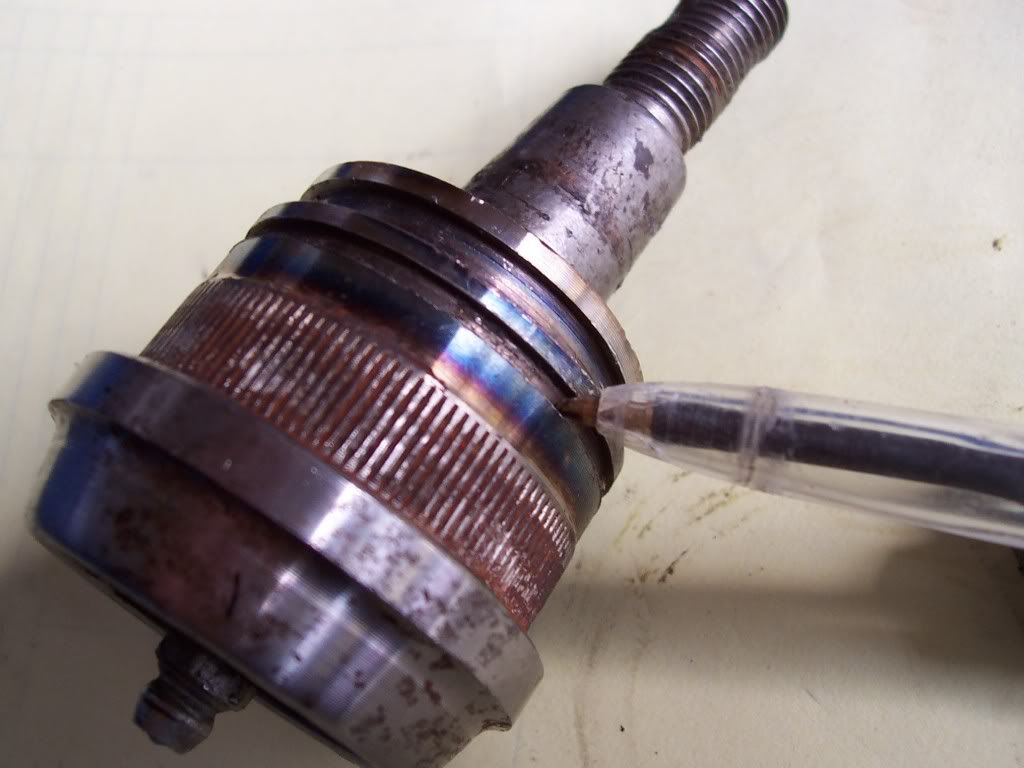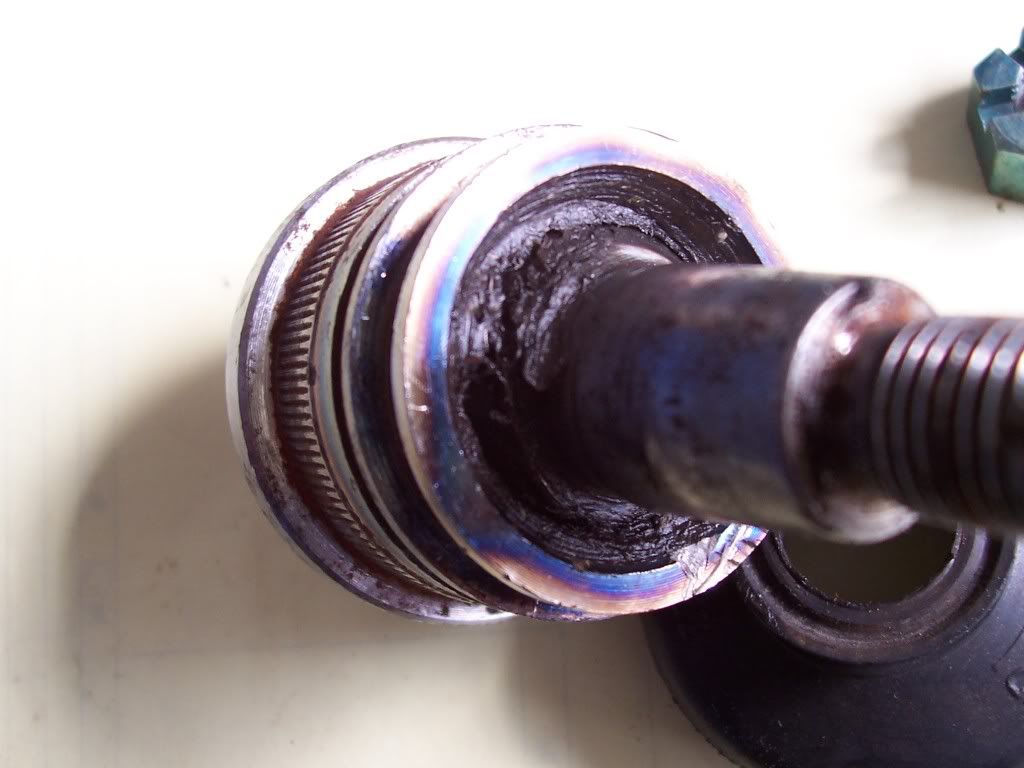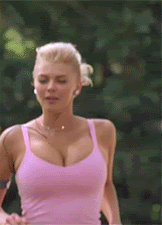Back in 2007 when I imported my car I bought a set of lower ball joints from DMCH as part of the "restoration". As it happened I only needed to use one on the RH side (the LH side was ok).
I fitted the lower joint and as most do put the split pin in facing forward (its easy to get in this way).
I enjoyed using my car and had done about 1000 miles when I heard of the "horrors" of DMCH lower ball joint failures. Following a long conversation with Steve Wynne, and James at DMCH, it was agreed the ball joints needed to be put in the car with the split pin facing left to right (to allow the grease channel in the joint to put grease where needed on the pivot ponts) There's a video Steve did on this too.
Anyhow, following this advice I rotated my RH DMCH joint and put the pin in left to right. (This is a sod as it hits the hub, but just about do-able) That was at 1000 miles ish on the new joint.
Well yesterday I noticed wheel wobble just like unballance wheels transmitting through my steering. I went and saw my tame tyre fitter today and checked the ballance again...all was fine? We got the car on the lift and had a good poke around, found nothing????
Drove home and noticed the wheel wobble was only happening when coasting (ie foot off throttle) or when braking. I discounted any disc warp because it wobbled without braking, cant be wheel bearings as new and no play when jacked up, cant be the rack because it's new too????
Not happy we couldn't find anything at the garage, I jacked the car up and violently rocked the wheels...NO PLAY?
ok...I then took off the front wheels and with the frame on axle stands, I carefully jacked up the front suspension under the tube in the lower arm where the anti roll bar fits. This compressed the spring and put the suspension in the same position it would be if the car was sitting on its wheels. Put the wheel back on and rocked again.
OMG
The play in the DMCH lower joint was ridiculous...it was absolutely shagged...and only after 2500 miles!
Took it out of the arm and got out my other DMCH joint that I bought at the same time but never fitted, and compared the two. (You can recognise DMCH joints as they have the word "armstrong" molded on the rubber boot)
They looked the same, so did I risk fitting another? Hmmmmm. I took the rubber boot off the old shagged joint and noticed the grease in the joint was hard and crumbly. I took the rubber boot off the new joint and noticed the grease in the new unused joint was hard and crumbly
I cleaned the NEW joints grease out and saw that the body of the joint where the circlip fits was "blued". (caused by excessive heat)
Now then....I know DMCH buy in these joints (ex VW) then machine them to fit the Delorean (by turning on a lathe to put the circlip grove in them). Have I just stumbled over the REAL REASON DMCH joints fail? I cleaned up the OLD joint it was blue too!
Me thinks they have machined these on a lathe with a tipped tool (ceramic composite) which needs no coolant. The down side is the joint gets so HOT it blues the body of the joint and BURNS THE GREASE inside the joint.
With BURNT grease in the ball joint, there is little lubrication, with blued metal the steel hardness is affected.
Now then...It's over to you Mr Wynne...
As a trial on behalf of the UK Delorean community I have repacked (with new grease) my unused blued and burnt grease filled DMC joint and fitted it to my car. As a gesture to DMCH I've put the split pin in Left to Right. Mileage recorded 64043. Now lets see how it performs. I can do no more.
I'll bring the old failed 2500 mile joint to Eurotec.
Regards
D
PS, Anyone with these DMCH joints (or any other for that matter) are advised to check the free play as above, my car just passed its MOT and unless you support the suspension as I said above...you'd never know you have play in the joint. I'd also advise poping the rubber boot off your joints and using the grease nipple on the underside, regreaseing them until you see new grease exit the top.






